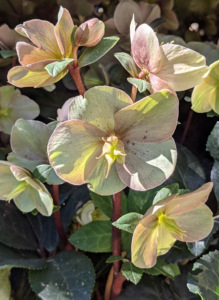Hellebores
go.ncsu.edu/readext?773114
en Español / em Português
El inglés es el idioma de control de esta página. En la medida en que haya algún conflicto entre la traducción al inglés y la traducción, el inglés prevalece.
Al hacer clic en el enlace de traducción se activa un servicio de traducción gratuito para convertir la página al español. Al igual que con cualquier traducción por Internet, la conversión no es sensible al contexto y puede que no traduzca el texto en su significado original. NC State Extension no garantiza la exactitud del texto traducido. Por favor, tenga en cuenta que algunas aplicaciones y/o servicios pueden no funcionar como se espera cuando se traducen.
Português
Inglês é o idioma de controle desta página. Na medida que haja algum conflito entre o texto original em Inglês e a tradução, o Inglês prevalece.
Ao clicar no link de tradução, um serviço gratuito de tradução será ativado para converter a página para o Português. Como em qualquer tradução pela internet, a conversão não é sensivel ao contexto e pode não ocorrer a tradução para o significado orginal. O serviço de Extensão da Carolina do Norte (NC State Extension) não garante a exatidão do texto traduzido. Por favor, observe que algumas funções ou serviços podem não funcionar como esperado após a tradução.
English
English is the controlling language of this page. To the extent there is any conflict between the English text and the translation, English controls.
Clicking on the translation link activates a free translation service to convert the page to Spanish. As with any Internet translation, the conversion is not context-sensitive and may not translate the text to its original meaning. NC State Extension does not guarantee the accuracy of the translated text. Please note that some applications and/or services may not function as expected when translated.
Collapse ▲This article was written by Gail Griffin, Extension Master Gardener℠ Volunteer in Lee County.
After the short, dim days of winter, nothing brightens the spirits like the first blossoms of spring flowers. However, there are a whole group of plants that can brighten the garden even before the daffodils and tulips arrive. Hellebores, sometimes called Christmas rose or Lenten rose, are long-lived perennials that let you take a peek at their petticoats right now.
 Hellebore varieties begin the bloom time in late December and continue through January and February, usually between Christmas and the season of Lent, therefore the name. The blooms last for weeks. They are not members of the rose family, but are in the Ranunculus family, related to the peony. They get their name from the resemblance to the rose. Bloom colors range from white to burgundy to yellow depending on the variety. Some have blotches of differing colors, some have freckles. There are also double blooming varieties. The blooms themselves are not true flowers, but are actually sepals which account for their longevity.
Hellebore varieties begin the bloom time in late December and continue through January and February, usually between Christmas and the season of Lent, therefore the name. The blooms last for weeks. They are not members of the rose family, but are in the Ranunculus family, related to the peony. They get their name from the resemblance to the rose. Bloom colors range from white to burgundy to yellow depending on the variety. Some have blotches of differing colors, some have freckles. There are also double blooming varieties. The blooms themselves are not true flowers, but are actually sepals which account for their longevity.
Hellebores are best suited in our area in part shade. East facing with protection from the afternoon sun would be ideal. They can adapt to a woodland setting. Plant in late spring or early fall and provide a well-drained location. In clay soils, amend with organic matter at planting to allow good drainage. When planning a site, consider that hellebores are like a rebellious child when they are relocated. They will take their own sweet time to recover and may take a few years to get reestablished. Most plants will produce seed in early summer and can easily spread to other areas in the garden. It may be a year or longer before the seedlings bloom. They are deer resistant.
Established hellebores can be tolerant of drought and the heat of summer. The leaves may appear wilted in hot sun, but will recover out of the sun’s rays. The plant will need a little extra water during dry periods. If the older leaves become tattered, prune them back to the ground. Be cautioned, as the sap from the plant can cause irritation to the skin. Mulch around the perimeter of the plant will keep the roots cool.
For a short video on hellebore production at Plant Delights Nursery, follow the link listed below. Hellebores are a good way to brighten a winter’s day and will give you a peek into spring. Right now their petticoats are showing!
Gail Griffin is an Extension Master Gardener Volunteer℠ in Lee County.
Resources used in the article:
Hellebores: Winter Hardy Shade Perennials for the Woodland Garden




